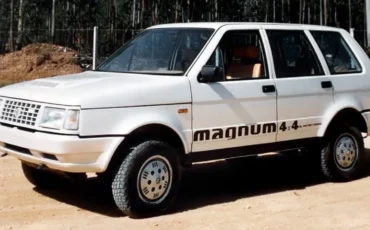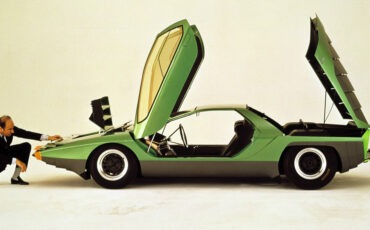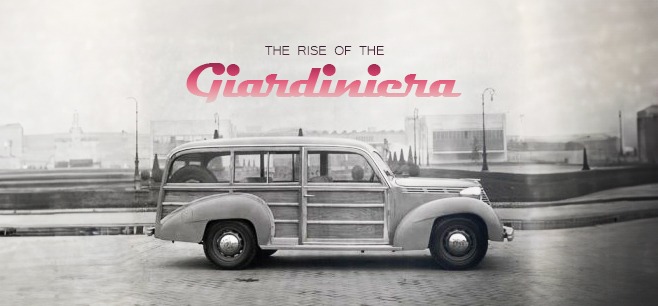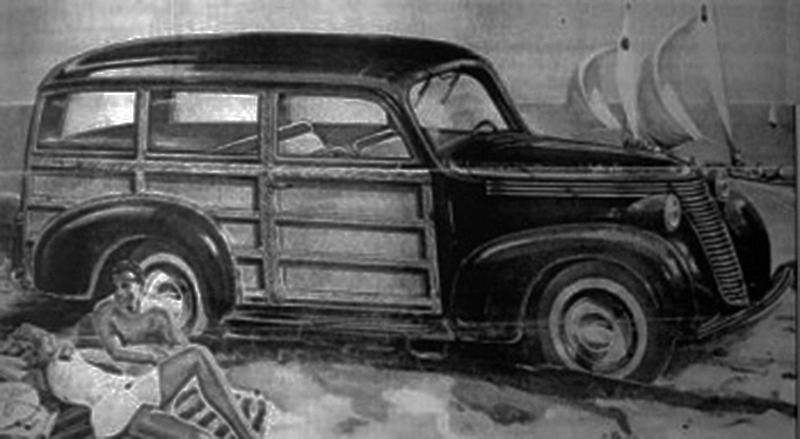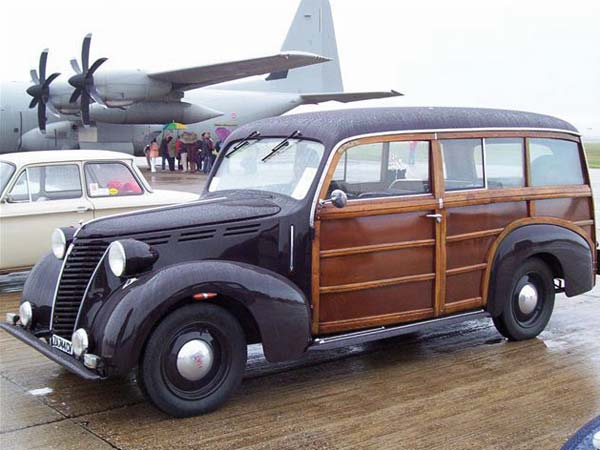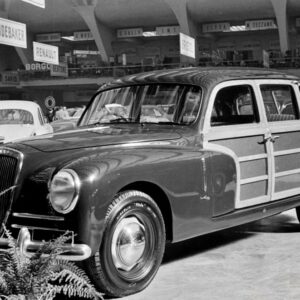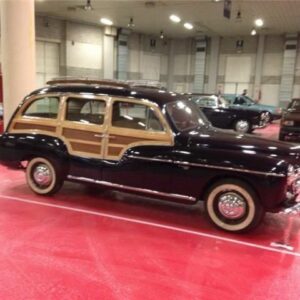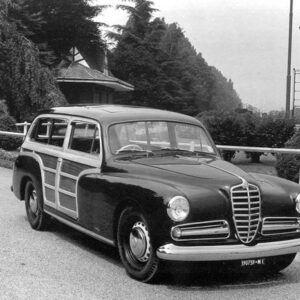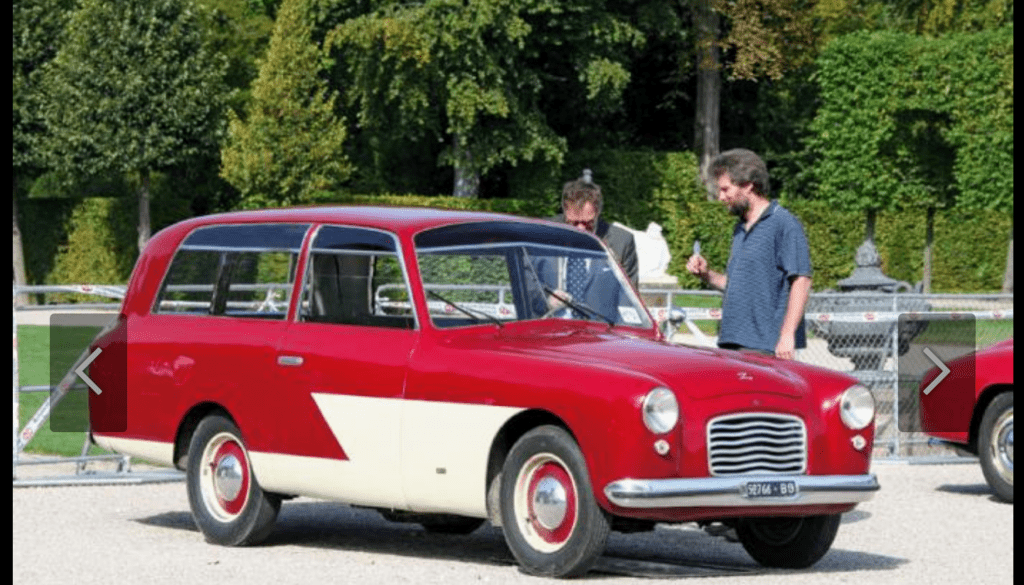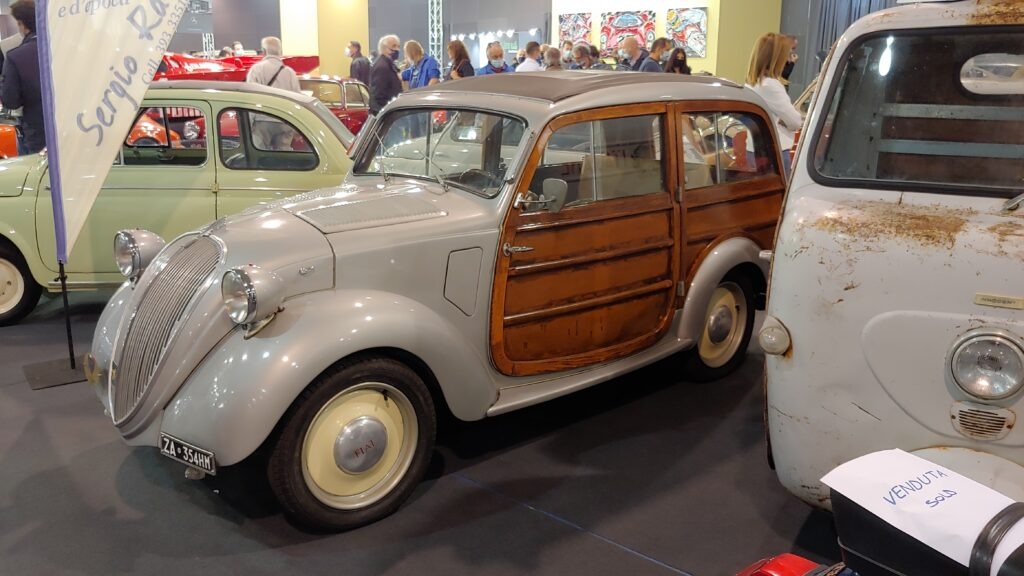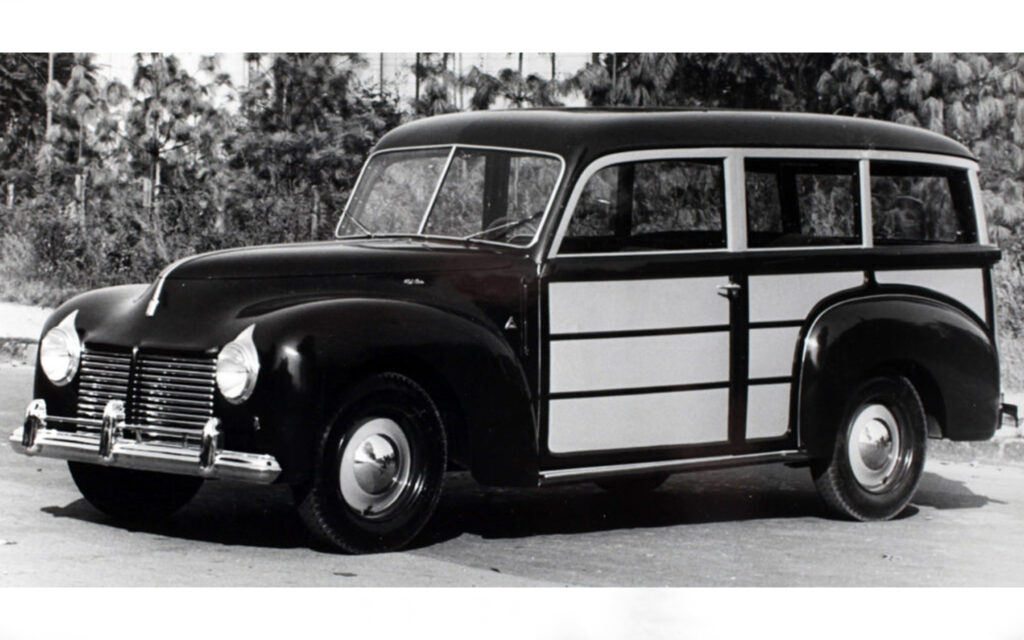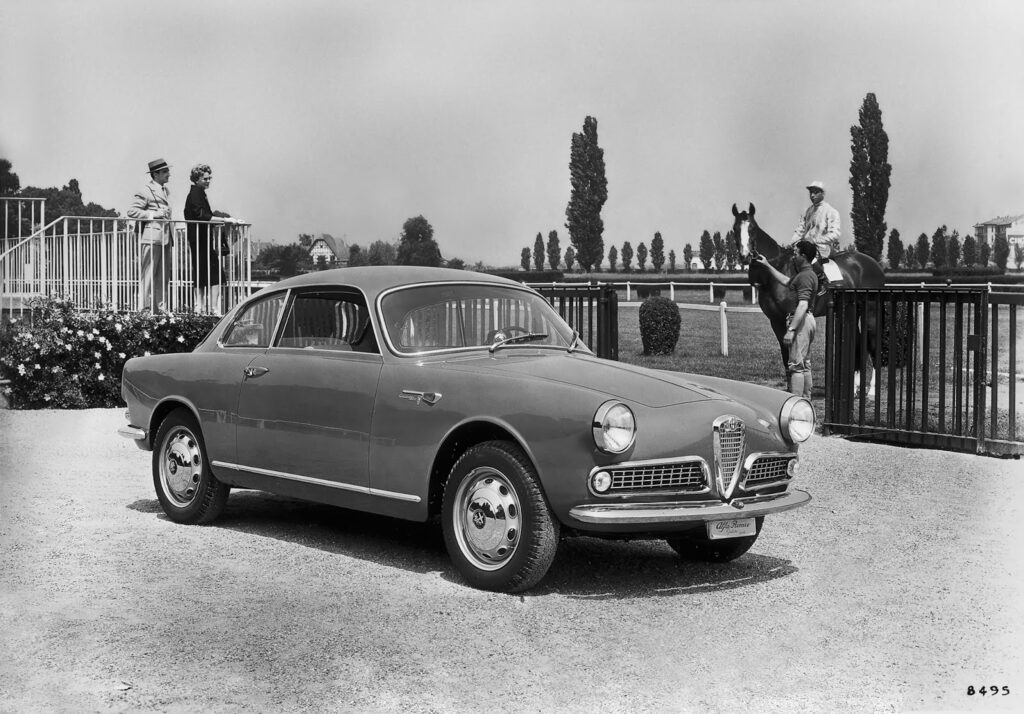
The Alfa Romeo Giulietta Sport coupè was actually developed before the Giulietta sedan, despite being derived from it. Due to production delays, the Bertone coachbuilder was commissioned to create a coupè version using the mechanics of the sedan. Interestingly, within Alfa Romeo, a model called the Sprint was already being developed as a future coupè. In the latter half of 1953, Franco Scaglione, the Bertone’s designer, skillfully combined various elements, including those from the Alfa Romeo 1900 Sprint coupè built by Carrozzeria Touring from Milan since 1951.
The Giulietta Sprint made its debut at the Salone dell’Auto in Turin in April 1954 and was an instant success. Many customers saw its potential for racing, but a formidable opponent emerged: the Porsche 356 1300 S, which had a more advanced level of preparation. Alfa Romeo responded by making significant modifications to the 1290 cc engine, increasing its power from the standard 65 hp to 90 hp. This led to the birth of the Giulietta Sport Veloce (SV) race cars when Alfa Romeo made its debut in 1956. In that same year, 27 SVs participated in the extremely rainy Mille Miglia race. Eugenio Castellotti emerged as the winner, while one SV finished 11th overall, surpassing more powerful and prestigious cars. However, tragedy struck when the brothers Lelo from Priolo (Dore and Carlo), driving the SV with chassis number 01944, veered off the road on the Radicofani slope due to the slippery slush caused by heavy rain. Although there was minimal physical damage, the car was destroyed.
The two brothers and Zagato share a strong friendship, which leads Zagato to design a new bodywork for their car. This bodywork incorporates stylistic elements that are influenced by Zagato’s extensive knowledge of race performance, as he himself is a pilot. Unfortunately, what remained of Bertone was dismantled. With the input and suggestions from the two brothers, Giovanni Zagato sketches a new design using perallumen, a lightweight material. The new bodywork weighs 110 kilos less than the previous one, resulting in noticeable improvements. The SV now boasts a top speed of approximately 180km/h, while the first Alfa Romeo Giulietta SVZ (Sprint Veloce/Fast Zagato) reaches a speed of around 195km/h. The Leto brothers from Priolo actively participate in various races, allowing other pilots to witness their car’s impressive performance. Following the success of the initial SVZ model in 1956, three more cars were produced in 1957, featuring a roof with two humps similar to the Appia Sport. In 1958, a total of 14 additional Alfa Romeo Giulietta SVZ cars were manufactured, bringing the total to 18. It is evident that this endeavor was quite costly, with each SV priced at 2,325,000 lire. Upon purchasing the car and delivering it to Zagato, the old bodywork was discarded, making way for the creation of a brand new design by Zagato, which cost 1,200,000 lire in 1957.
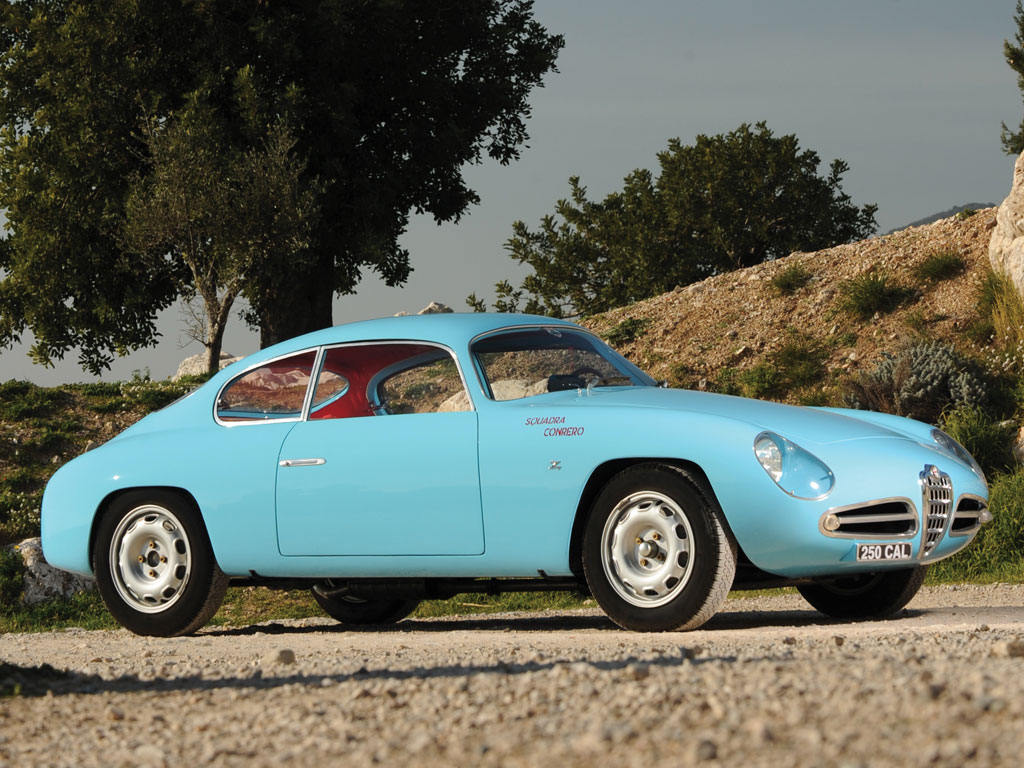
The total cost amounted to 3,525,000 lire, which was approximately the same amount needed to purchase a Ferrari during that time. It was common for the engine to be enhanced as well, either by Virgilio Conrero (who was also in charge for tuning the first Supersonic by Ghia) or Facetti, resulting in an increase in the overall price. The initial “engine wizard” demanded 400,000 lire, further raising the total to 3,925,000 lire. It is worth noting that the average wage at that time was around 150,000 lire. However, it is important to highlight that Conrero himself managed to boost the power of the Giulietta Sprint engine to 130 horsepower, capable of reaching 1000 rpm. This situation proved to be embarrassing for Bertone, who had previously enjoyed a privileged relationship with Alfa Romeo (particularly with the three famous B.A.T 5/7/9, designed by Scaglione based on the 1900 coupé). Bertone found himself being overshadowed by the young Zagato brothers, prompting him to introduce a further aerodynamic evolution of the Giulietta: the SS (Sprint Speciale). Due to its sleeker design compared to the standard coupé, the SS had a shortened wheelbase. The wheelbase of the standard coupés SV (and SVZ as well) measured 2380 mm, whereas the new SS was reduced to 2250 mm. Scaglione then crafted a new bodywork for it, achieving a drag coefficient of 0.28.
The initial Alfa Romeo Giulietta SVZ prototype was unveiled in the final month of 1957, while the second car made its appearance at the Salone of Geneva in March 1958. The definitive version was showcased in Monza in June 1959. Alfa Romeo had anticipated the production of a limited series for the Giulietta SS, which was presented as a race car. It was believed that Bertone sought revenge on the SV, but this was not the case. The SS prototype, constructed entirely of aluminum, weighed 780 kg. However, the Alfa Romeo Giulietta SVZ, manufactured in Milan in 1958, weighed approximately 725 kg. Furthermore, the standard SS had gained weight, reaching 875 kg. Although Bertone had crafted another aesthetically pleasing bodywork, it was not suitable for racing. Only a few cars were utilized in competitions, resulting in limited sporting achievements. Another experiment, of a more aerodynamic kind, was done by Michelotti, who recharacterized a Sprint Veloce chassis with a highly profiled body that was named “Goccia”: however, it remained a unique specimen, still extant today. From June 1959 to Spring 1960, the old SV secured 15 victories in the Italian Championship, whereas the new SS only achieved 3 victories. These outcomes were significant, prompting Zagato to request Alfa Romeo’s assistance in supplying shortened flatbeds designed for the SS, as well as the mechanical components. Additionally, Alfa technicians collaborated in the development of another lightweight Giulietta for racing purposes: the Giulietta Sprint Zagato. The new model engines were primarily assigned to three preparers, namely Conrero, Facetti, and Nardi, with the inclusion of Mr. Bosato.
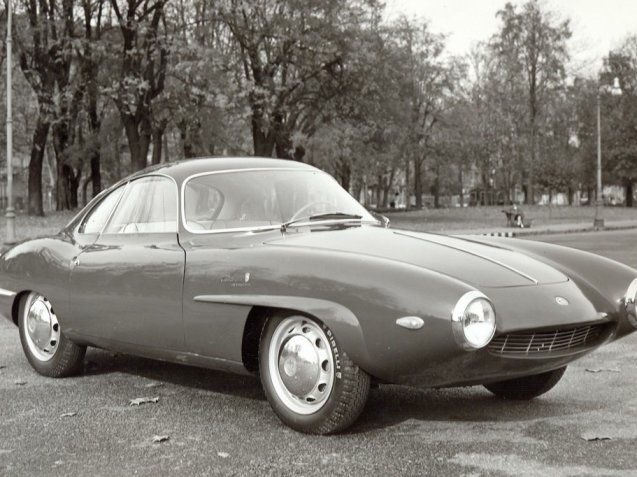
The confrontation that took place on the road, as documented in the 1967 issue of ‘Auto Italiana’ magazine, was particularly ruthless. It involved the infamous pilot ‘Kim’ and two Alfa Romeo models, the SS and the SZ. The SS had a maximum speed of 188.34 km/h, while the SZ boasted a higher speed of 197.84 km/h. During a race, a SZ with a Conrero engine reached an impressive speed of 209 km/h. The SZ had a distinct bodywork that set it apart from its competitors. It was a handcrafted car with a rounded bar soap shape and a lightweight tubular frame attached to a shortened chassis provided by Alfa Romeo. Only a little over 200 SZ models were produced, according to the most reliable sources. For a year and a half, they dominated the 1300 cc class, even surpassing more powerful yet less agile cars in the overall rankings.
In June 1961, Elio Zagato introduced a modified version of the SZ with a longer trunk during a competition in Monza. This marked the beginning of a design journey that eventually led Zagato to create the iconic Alfa Romeo Giulia TZ, which brought great fame to the brand. However, despite these achievements, there is still some confusion surrounding the story. Let’s get back to the Mille Miglia race in 1956, which took place amidst heavy rain. The Leto team from Priolo was driving their Giulietta SV with Bertone bodywork. As they descended from Radicofani, they encountered a wide bend that led to a bridge with iron abutments. The road was covered in mud, making it slippery. Unfortunately, the Giulietta lost control on the slush and veered towards the only opening that caused it to fall into a stream bed. If the car had deviated just two meters earlier, it would have landed on a grassy surface. If it had deviated two meters later, it would have collided with the abutments. Instead, it found the only gap that irreparably damaged the car’s bodywork. Without this incident there would have been no SVZ or SZ models at all.

